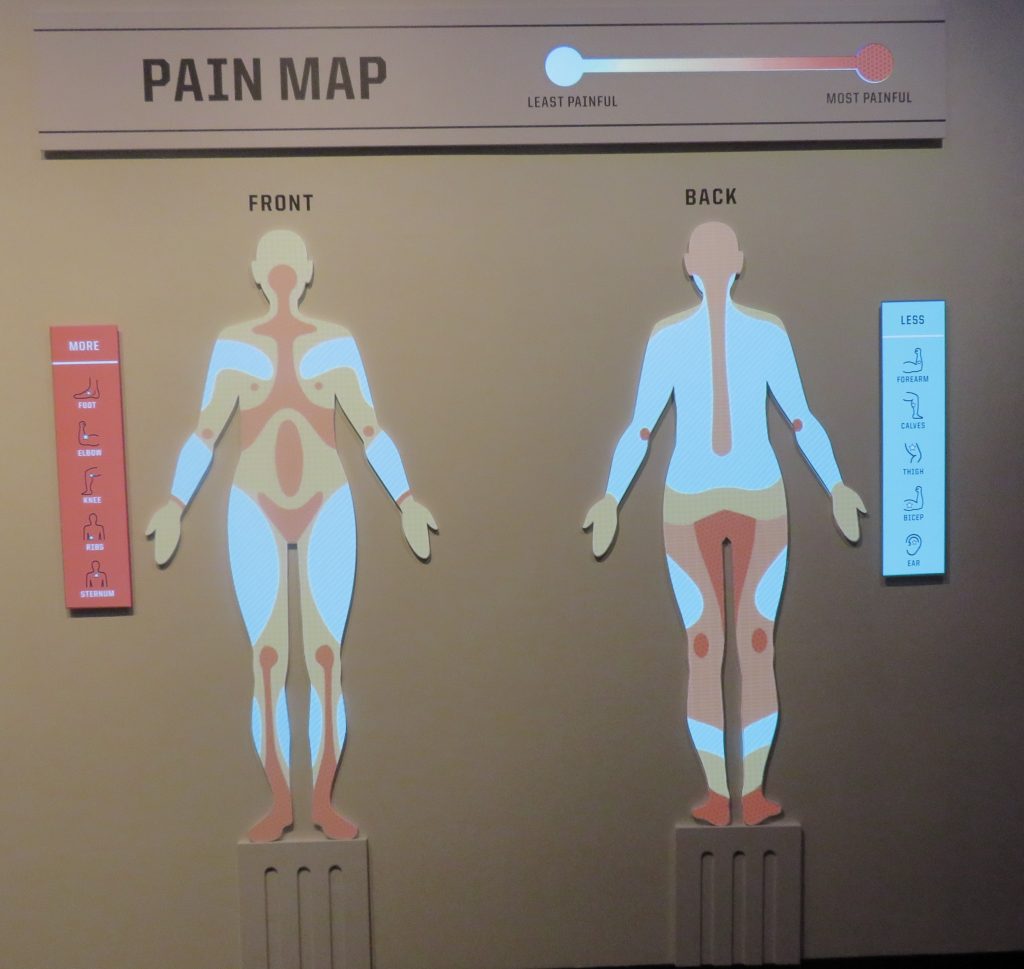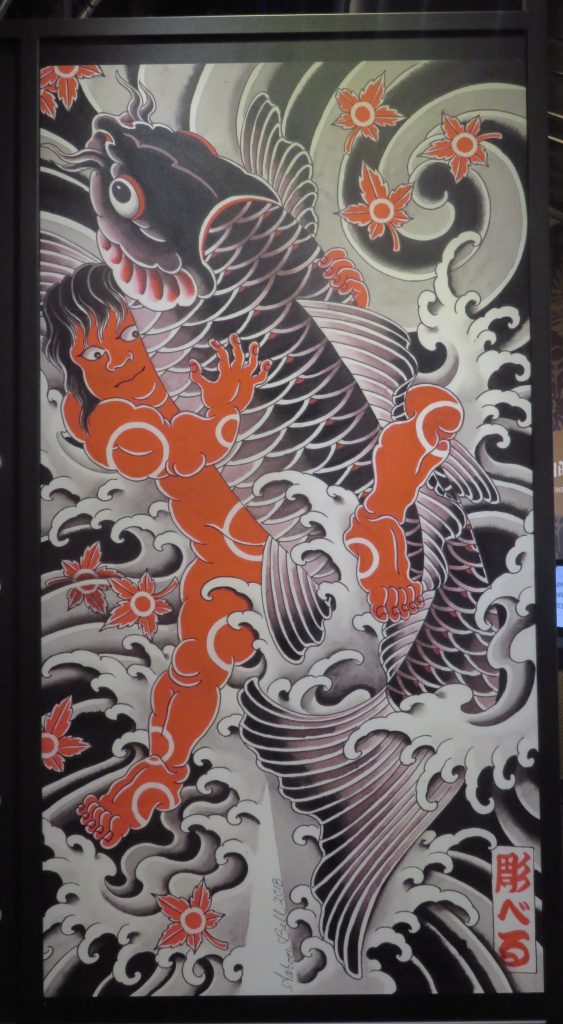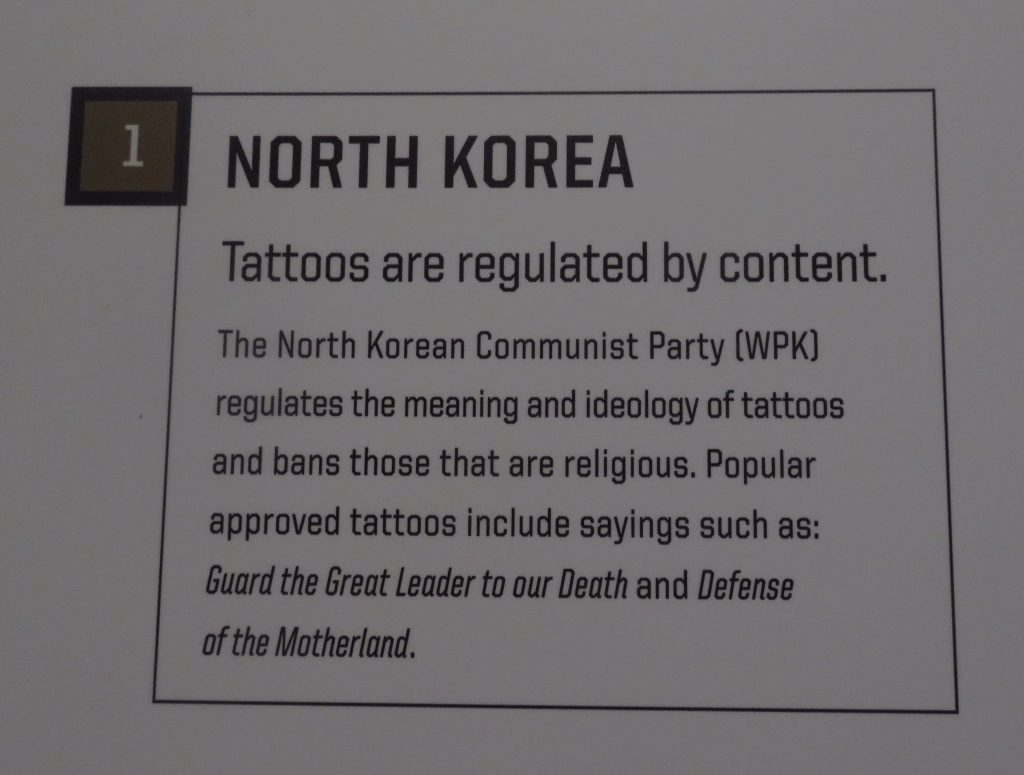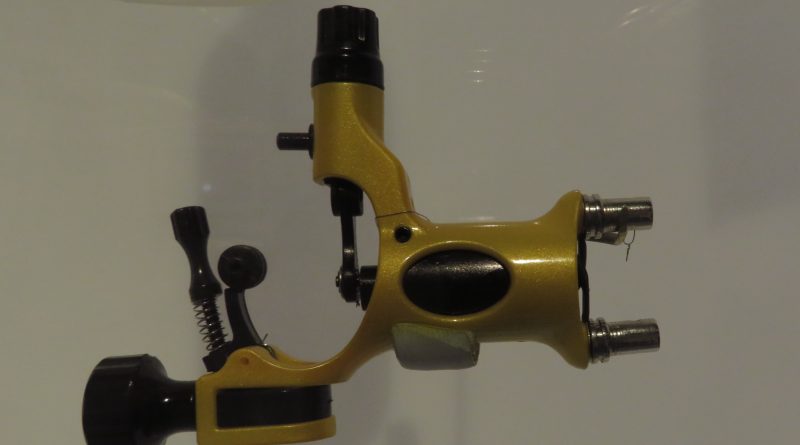Under the skin: MoPOP’s “Body of Work” exhibit

Tattoos are as much a part of rock ‘n’ roll as leather jackets and torn t-shirts. And you’ll certainly pick up a rock ‘n’ roll vibe while strolling through the recently opened “Body of Work: Tattoo Culture” exhibit at the Museum of Pop Culture (MoPOP), starting with the background soundtrack, a vibrant mix of Psychic TV’s “God Star,” Black Flag’s “Jealous Again,” the Jesus and Mary Chain’s “April Skies,” Jimi Hendrix’s “Little Wing,” and Bob Marley’s “Three Little Birds.” Once the province of indigenous cultures, or the means by which an army could count the number of its soldiers, tattoos are today both a mainstream accoutrement and an art form.
“Body of Work” explores all elements of tattooing: its history, the tools of the trade, its practitioners, and its gradual acceptance into the general culture. Though the ancient Romans tattooed their soldiers with a number, and those who made religious pilgrimages got tattoos in commemoration of their journey, the rise of tattooing in the West is largely tied to the Western discovery of the islands of the South Pacific. Sailors visiting Tahiti were intrigued enough by the tattoos they saw on the local residents that they asked to get tattooed themselves, thus kicking off the perennial interest in tattoos among military personnel (my father, a Marine, had a seahorse tattooed on his shoulder).

Tattooing eventually spanned the globe. Yet there was still something of the outlaw about those with them. In 20th century America, having a tattoo was seen a sign of potential criminality — even though, at the same time, kids were growing up benignly taking in the tattooed anchor on the bulging forearm of “Popeye, The Sailor Man,” in Saturday morning cartoons.
Then, as the exhibit makes clear, it was rock ‘n’ roll that took tattooing to a whole new level. Or, rather, it was one particular rock ‘n’ roll pioneer who did — Janis Joplin. You’ll hear her version of “Summertime” as part of the “Body of Work” exhibit soundtrack, and for good reason. Renowned for her inimitable sense of style, Joplin was unsurprisingly drawn to the art of tattoos. She commissioned San Francisco tattoo artist Lyle Tuttle to give her two tattoos, a bracelet on her wrist and a heart on her breast. She was so pleased with his work, she invited him to one of her parties so he could tattoo the guests, then dropped his name the next time she appeared on “The Dick Cavett Show.” The demand for Tuttle’s services soared. So it turns out the first celebrity with a tattoo was a hell raising rock ‘n’ roller. How appropriate!

Tuttle’s story in the exhibit is illustrated with never-before-seen photos, along with a bio mentioning that he went on to tattoo the likes of Cher and Joan Baez. “He credited the 1960s women’s liberation movement for the newfound popularity of the art form,” we’re told. Folks in other music genres were soon quick to adorn themselves, as photos of Jerry Only from the Misfits, and Tupac Shakur reveal (“The meaning of his infamous ‘Thug Life’ tattoo is still being debated”). And though not strictly speaking a music act, the Jim Rose Circus Sideshow was definitely part of our Northwest music scene in the early 1990s, being a featured act with Lollapalooza the year Pearl Jam and Soundgarden were on the bill. The Sideshow’s Matt “The Tube” Crowley told me that Eddie Vedder and Kim Thayil regularly dropped by to catch the antics of “Mr. Lifto,” or to gaze upon the wealth of tattoos covering the body of “The Enigma” during the Sideshow’s set. There’s a rare poster of the Sideshow in the exhibit.
There’s quite a lot of information packed into what’s one of MoPOP’s smaller galleries. There’s a wall of tattoo trivia, for example. Wondering where it’s most painful to get a tattoo? According to the life size graphic, avoid places near the bone. Like to know what the most popular tattoos in the US are? The anatomical heart, the Ninja Turtle, and Queen (the band). Curious about places where tattoos are restricted and/or banned? In North Korea, all tattoos must be approved by the Communist Party.

There’s a quiz that will help you determine your tattoo “style” (mine was “New School,” making a cartoon “look more cartoony and yet more realistic at the same time”). You can watch a time-lapse film of a tattoo artist at work, and examine the equipment they use in the process. If you’d like a completely pain free method of seeing what a tattoo would look like on yourself, you can hold your arm under a special light that will project an image onto your skin. And the panels profiling 11 Pacific Northwest tattoo artists feature tactile panels images of their work (specifically created for this show) that you can touch, mirroring the sensation of what a fresh tattoo feels like. The artists also chose the exhibit’s playlist, drawn from the kind of music they’d play in their own tattoo parlors while they’re plying their trade.
Even tattoo aficionados should come away from “Body of Work” having learned something new. It’s an exhibit that takes more than a surface look at its subject, and, in the words of the curators, is designed to introduce tattooing to the kind of wider audience that comes through MoPOP; “We wanted this to be something that’s easily digestible at any age.” Mission accomplished. If you take a child, don’t be surprised if they later tell you they’d like to get a Spongebob SquarePants tattoo.
“Body of Work: Tattoo Culture” runs at MoPOP through May 24, 2020. Info at MoPOP.org.

